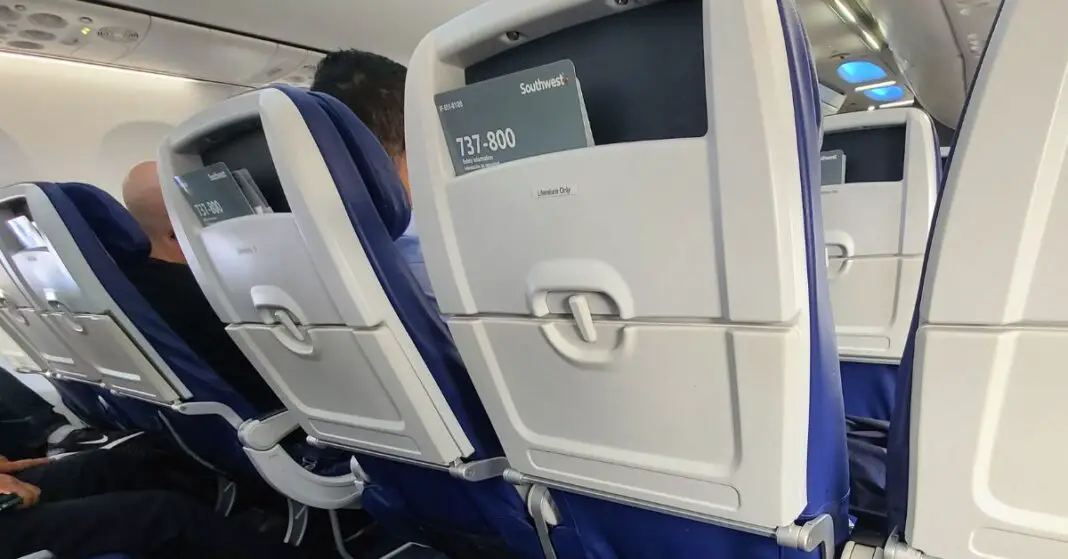If you’ve ever flown with Southwest Airlines, you are likely familiar with their unique approach to seating. Unlike most North American carriers that assign seating in advance, Southwest utilizes an ‘Open Seating’ policy, allowing passengers to choose their seat from those still available upon boarding the plane.
This method, while initially seeming counter-intuitive, can offer savvy passengers the opportunity to select a seat that offers optimal comfort and value.
This article will cover the details of Southwest’s distinctive seating policy and offer tips on how to execute the seat selection process effectively and efficiently.
Table of Contents
Understanding Southwest’s Unique Seating Policy
Seating on an airplane: it can make or break your flying experience. Admit it, we’ve all felt that thrill of anticipation, that slight flutter of anxiety, when the moment to choose your seat finally arrives. And your neighbor on this journey through the clouds?
That’s a whole other ballgame! But amidst all the airline giants and their complex seating algorithms, Southwest Airlines stands tall with a seating policy that’s simple, efficient, and extremely unique.
Picture it: no assigned seats, no jostling for window or aisle preferences, no last-minute disappointment. Souls unbound by the confines of a 16B or a 7A. Southwest’s open seating policy is a path-breaker, advocating freedom of choice in an otherwise structured industry.
Often, the seat you sit in is pre-determined by airline algorithms that consider numerous factors – from ticket class and frequent-flyer status to how early you checked in. Not Southwest though! This innovator tears down the traditional barriers and brings in a fresh breeze with, what they refer to as, a “first come, first served” policy.
Here’s how it works.
During check-in, passengers are assigned a boarding group (A, B, or C) and a boarding position (1-60). Now, don’t confuse this with an assigned seat; your boarding group merely reflects your check-in position. Simply put, the earlier you check-in, the better your boarding group and position. When boarding, groups are called in order; Group A, then B, then C.
Passengers line up in numerical order within their group and enter the plane when called. Once onboard, they can choose any seat they want – window, aisle, middle, near the front, back, or over the wings; the choice is yours, embodying the essence of pure democracy
In a world where airlines are adding layers of complexity to their seating policies, Southwest’s approach flips the script. They’ve cast aside typical division by fare classes, preferred customer hierarchies, or algorithmic allocations. Instead, they rely on simplicity and fairness.
It has been their hallmark, making them popular among flyers who prefer not having to second-guess their seatmate or battle for elbow room. However, this also means that families or groups needing to sit together must be strategic about their check-in process to ensure a smooth, hassle-free flight.
Process for Seat Selection on Southwest
With Southwest Airlines, passengers enter the plane based on the order of their issued boarding positions, creating a fair system that consequently influences real-time seat selection.
The genesis of this process lies in an accurate automated system, fostering the ideal balance between customer satisfaction and operational efficiency. Therefore, it’s paramount to break down how seat selection transpires in real time.
Upon entering their aircraft, passengers have full reign over their seat choice, as opposed to being restricted by a predetermined assignment. Provided the seat isn’t already claimed or restricted, passengers can swiftly claim their preferred proximity to the front, aisle, window, exit row access, and even their proximity to fellow traveling companions.
For those that have a keen interest in this dynamic seating policy, early bird check-in gets the worm, or in this case, the optimal seat. An additional fee grants early boarding benefits and, ultimately, a wider selection of seating options.
Prioritizing control over comfort, this extension of offers by Southwest speaks to its knack for understanding differing consumer preferences.
The innovative real-time seat selection process not only offers an efficient service but is also a strategy that generates an extra revenue stream. Swift execution and strategic monetization are key elements that demonstrate Southwest Airlines’ business acumen.
When it comes to group travel; however, it’s important to note that while the open seating may provide individual passengers with flexibility, it may conversely prove challenging for families or groups. Southwest acknowledges this and offers Family Boarding between the “A” and “B” groups to alleviate these concerns.
Southwest Airlines bet against the grain by appointing such a unique seating policy. In doing so, they reframed the conversation around customer experience in aviation. As evident by frequent fliers’ loyalty and the fierce debates it’s sparked amongst competitors, Southwest’s gamble has genuinely paid off.
Southwest’s out-of-the-box approach to seating is more than just a discussion about customer service. It’s a call to arms for entrepreneurs across sectors to challenge norms in their respective industries.
Just as Southwest transformed the status quo in aviation, entrepreneurs must foster a culture of evolution in their business endeavors – only then can we expect change and growth in today’s furious pace of the industry.
Remarkably, Southwest Airlines embraces an audacious approach to seemingly mundane aspects like seating, thereby reimagining expectations and transforming the passenger experience. It is, therefore, high time that other industries – whether hospitality, finance, or tech – take a page from Southwest’s playbook and reinvent their respective wheelhouses.
Can I pick my seat on Southwest?
Southwest Airlines allows you the flexibility to choose your seat. Seats are not pre-assigned on their flights, so you are welcome to take any available seat once you board the plane. Southwest employs a swift, straightforward, and efficient boarding process. Refer to your boarding pass to determine your assigned boarding group (A, B, or C) and boarding position (1-60).
Does checking in early get you a better seat on Southwest?
Although checking in early for Southwest flights doesn’t guarantee the best seat, it does offer an advantage. EarlyBird Check-In ensures your boarding position is determined by the order of purchase, increasing your chances of selecting a seat closer to the front. Regular check-in 24 hours before the flight also improves your odds compared to waiting, although with less certainty.
It’s important to note that frequent flyers and EarlyBird purchasers receive priority regardless of check-in time. Therefore, flexibility and checking in as soon as possible are crucial for securing your preferred seat on Southwest.
Why doesn’t Southwest assign seats?
Southwest Airlines follows an open-seating policy, where they do not assign specific seats to passengers. This approach is part of Southwest’s unique boarding process, emphasizing flexibility and passenger choice. Instead of pre-assigned seats, passengers are free to choose any available seat once they board the aircraft.
How do I get priority seating on Southwest?
To get a good seat on Southwest, you have some choices. If you want to be one of the first to board (A-boarding), you can use EarlyBird Check-In (better if you buy it early) or choose a Business Select fare. If you like being flexible, check in exactly 24 hours before your flight or use a credit card with special benefits.
If you’re a frequent flyer with Rapid Rewards status, you get top priority. Also, think about Upgraded Boarding or preboarding if you qualify. Keep in mind that being early is usually a good thing, but with Southwest’s open seating, it’s like a fun game. So, set your expectations, check in on time, and enjoy the excitement of trying to get the seat you want on Southwest!





